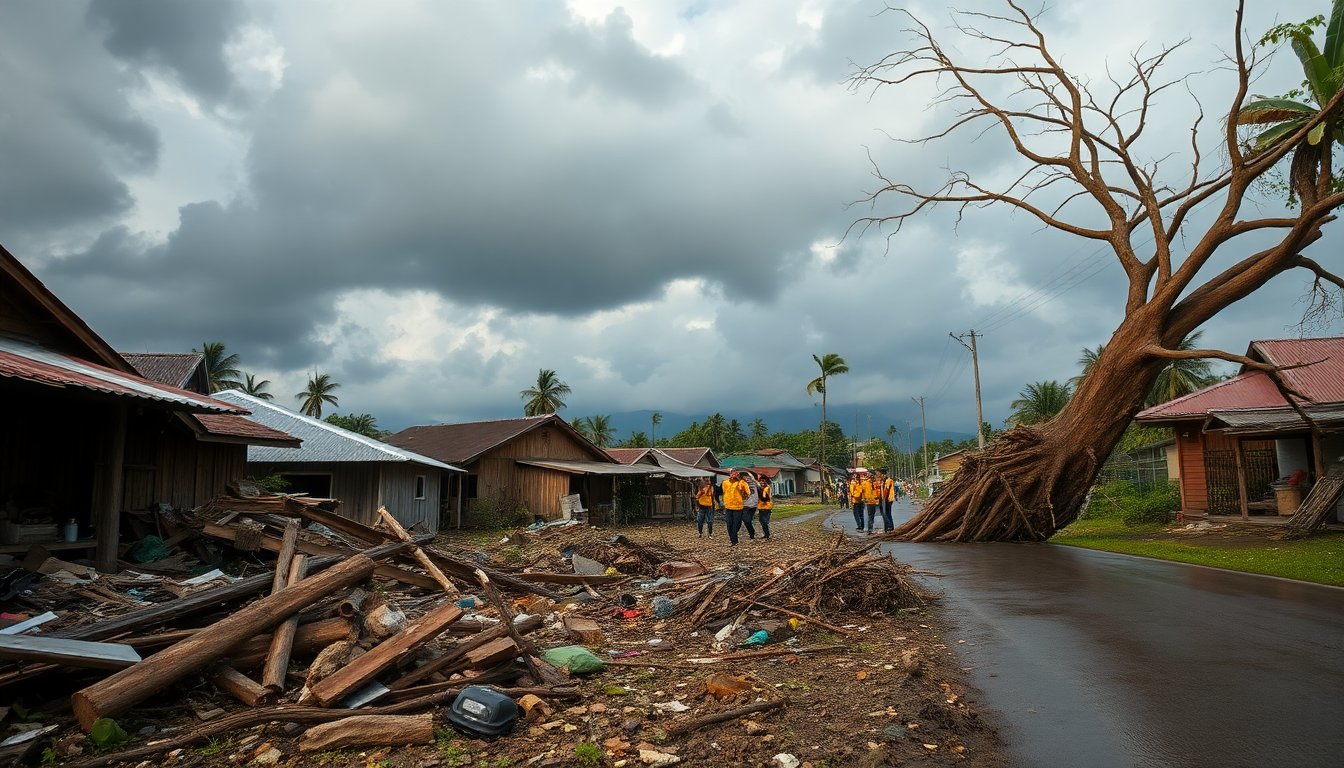Table of Contents
On a recent Sunday evening, the northeastern coast of the Philippines faced the devastating impact of Super Typhoon Fung-wong. This storm has claimed at least two lives and forced the evacuation of over one million residents from areas at risk of flooding and landslides.
With sustained winds reaching 185 km/h and gusts soaring to 230 km/h, it stands as the most formidable storm to threaten the archipelago this season.
As Fung-wong approached, it extended its reach across two-thirds of the Philippines, with a rain and wind band approximately 1,600 kilometers wide.
The storm’s onslaught began earlier that Sunday, as it emerged from the Pacific, exacerbating the dangers posed by Typhoon Kalmaegi, which had already left a trail of destruction earlier in the week, resulting in at least 224 fatalities.
The immediate impact of Fung-wong
Fung-wong, known locally as Uwan, made landfall in Dinalungan town, Aurora province, unleashing torrential rains and fierce winds throughout the northeastern regions. In response to the looming disaster, Philippine President Ferdinand Marcos Jr. declared a state of emergency, acknowledging the extensive damage from Typhoon Kalmaegi and the anticipated effects of Fung-wong.
Evacuation and emergency response
In preparation for the storm, more than 916,860 individuals were relocated from high-risk areas, particularly in the Bicol region, which is vulnerable to mudflows from Mayon Volcano. Defense Secretary Gilberto Teodoro Jr. emphasized the gravity of the situation in a televised address, urging residents to adhere to evacuation orders promptly, as rescue efforts become increasingly difficult once flooding begins.
Potential disaster looms, with the Office of Civil Defence estimating that over 30 million people could be impacted by the storm, including metropolitan Manila, the country’s bustling capital and economic hub. The Philippines, facing an average of 20 typhoons annually, remains one of the most disaster-prone nations worldwide.
Red Cross and humanitarian efforts
In light of the storm’s impending arrival, local Red Cross chapters have established over 500 evacuation centers, providing shelter for nearly 21,000 families. Richard Gordon, chair of Red Cross Philippines, stated that the organization has been actively engaged in disaster response throughout the year, addressing numerous calamities, including a recent earthquake in Cebu.
Challenges during the storm
As the storm intensified, reports indicated widespread power outages in several eastern towns, complicating emergency efforts further. Early casualties included two individuals—one lost in a landslide and another who succumbed to debris in Catbalogan city. The Red Cross continues to prepare for further casualties, with Gordon noting that challenges include ensuring safety for those in evacuation centers while conducting rescues following potential structural collapses.
Pre-emptive measures and ongoing developments
Authorities in northern provinces took decisive action in anticipation of the storm by canceling classes and shutting down government offices following the storm’s landfall. Reiza Dejito, country director for CARE Philippines, reported dire conditions in several regions, where flash flooding had already begun, leaving entire towns without electricity or mobile service.
As travel disruptions escalated, more than 325 domestic and 61 international flights were canceled, stranding thousands at seaports as the coast guard prohibited vessels from entering hazardous waters. The government has issued warnings of a potentially life-threatening storm surge exceeding three meters along coastal areas, heightening the urgency of evacuation efforts.
With the storm expected to pose a threat for several days, the focus remains on how best to assist those displaced and ensure the safety of vulnerable communities. The experiences of previous disasters weigh heavily on those affected, as the recovery process often feels stalled.
As Fung-wong approached, it extended its reach across two-thirds of the Philippines, with a rain and wind band approximately 1,600 kilometers wide. The storm’s onslaught began earlier that Sunday, as it emerged from the Pacific, exacerbating the dangers posed by Typhoon Kalmaegi, which had already left a trail of destruction earlier in the week, resulting in at least 224 fatalities.0





